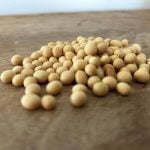Supermarket lights help keep spinach fresh and producing new vitamins, U. S. government researchers reported Mar. 3.
The surprising findings should apply to other fresh vegetables and may offer insights into how to keep produce fresher longer, the researchers reported in the Journal of Agricultural and Food Chemistry.
They may also suggest ways to boost nutrients in fresh foods, said Gene Lester of the U. S. Department of Agriculture’s Agricultural Research Service. He said the idea for the experiment came to him when he was shopping.
Read Also

Sharing stories to promote Canadian farm safety
Personal stories can sometimes go farther than facts and data to promote safe practices on Canadian farms, Canadian Agricultural Safety Association conference attendees hear.
Supermarkets often display fresh spinach in clear plastic containers at around 39F (4C) under fluorescent light 24 hours a day. Lester wondered if this was good or bad for the leaves.
“It is about time we asked some of these questions and do some of the science,” Lester said in a telephone interview.
His team kept fresh spinach leaves under continuous light or darkness for three to nine days.
Spinach kept under lights for as little as three days had significantly higher levels of vitamins C, K, E and folate, as well as more the colourful and healthful carotenoids lutein and zeaxanthin, they reported.
Leaves stored in the dark lost nutrients, Lester said. On refl ection, he said, the findings should not be surprising.
“These vitamins are basically in the plant for photosynthesis and we humans, being the biggest predator of plants, have evolved over time to utilize them as opposed to we having to manufacture them,” he said.
Even when picked, leafy greens continue to photosynthesize, Lester said. “As long as there is moisture in the leaves and as long as there is gas exchange and light, it is good to go whether they are picked or not,” he said.
His team chose fresh spinach as it is “arguably one of the most nutritionally complete vegetables commonly consumed.” A serving of spinach provides 20 per cent or more of the recommended dietary intake of vitamins C, A, B9, K and E.














